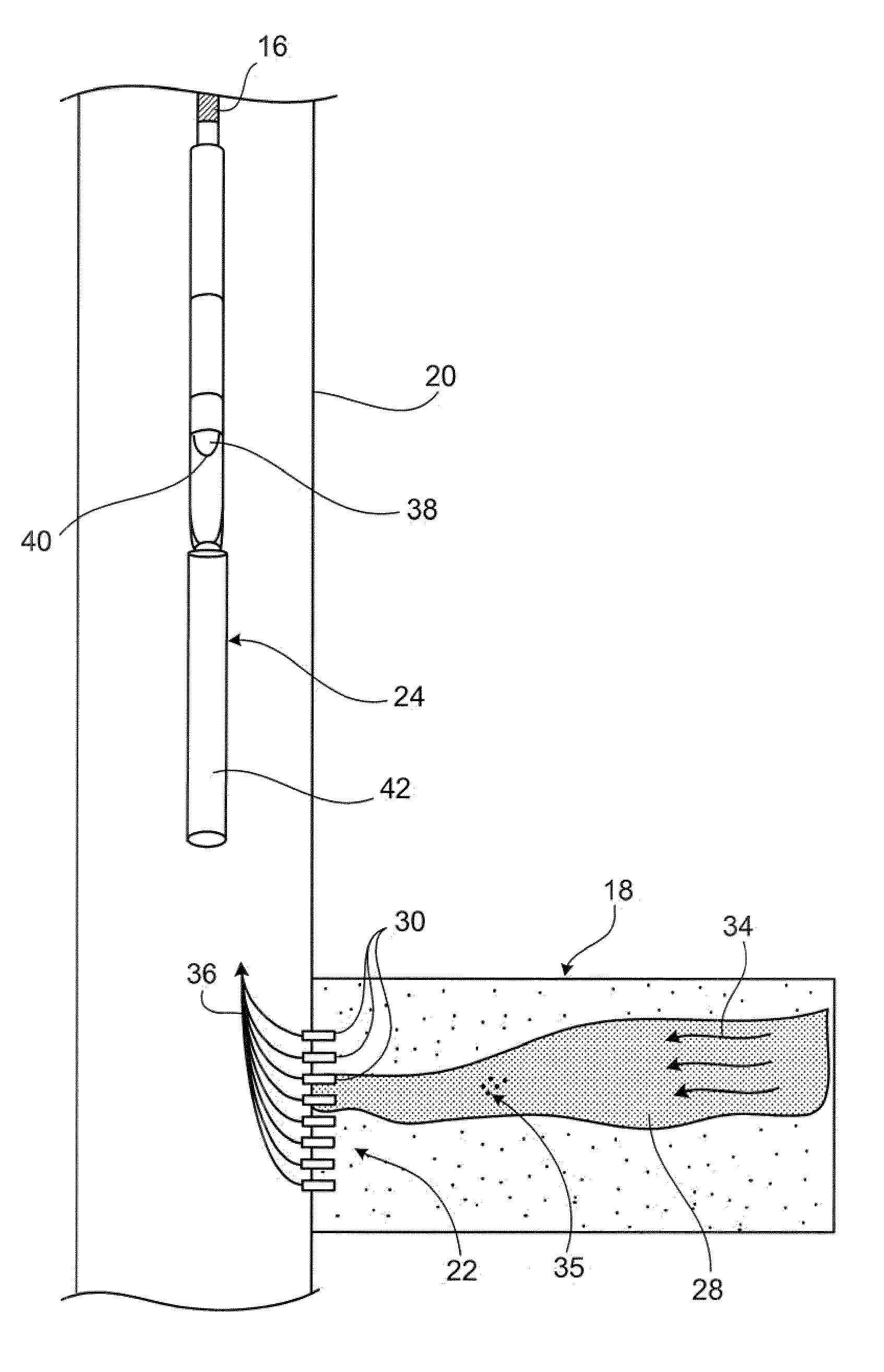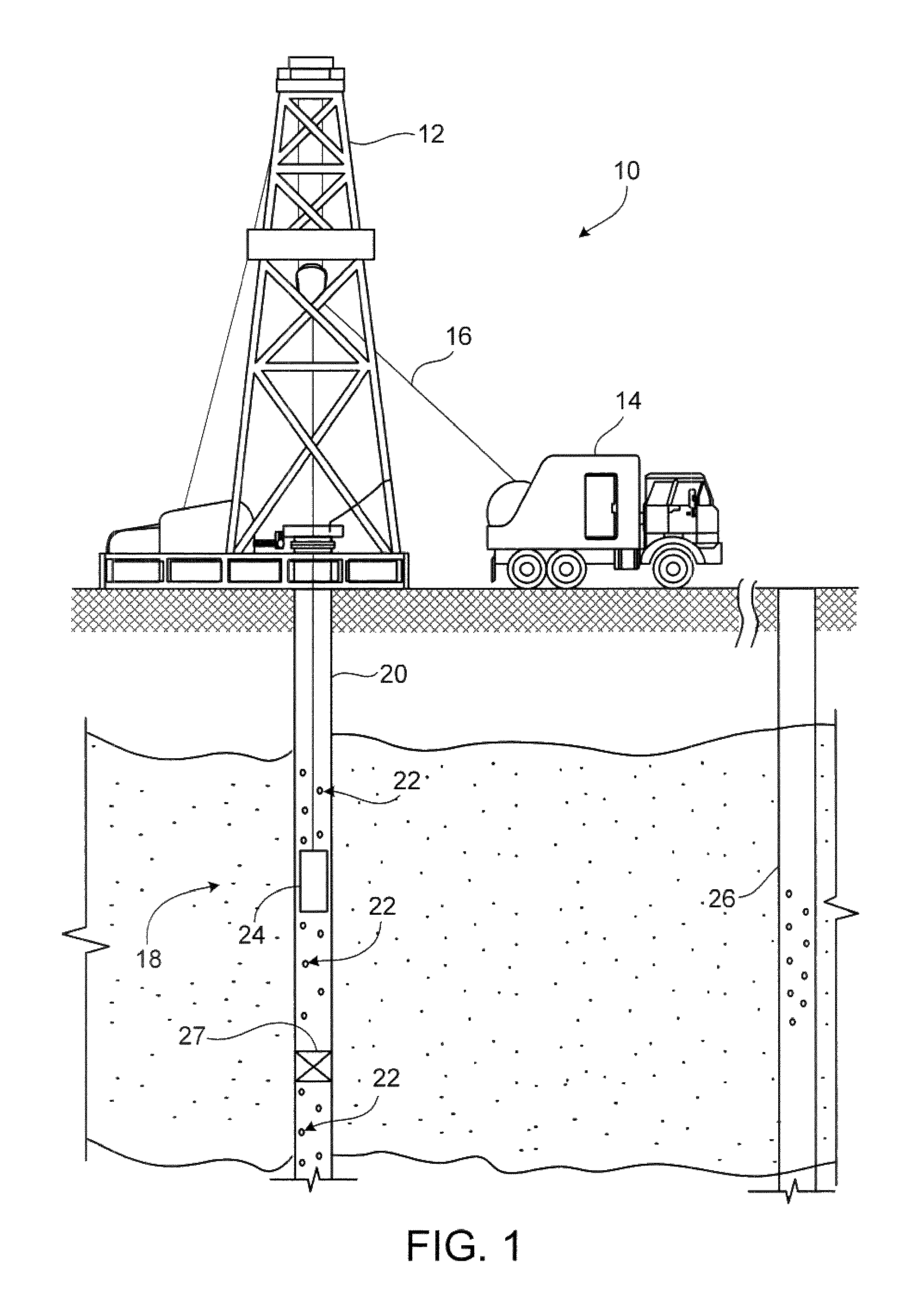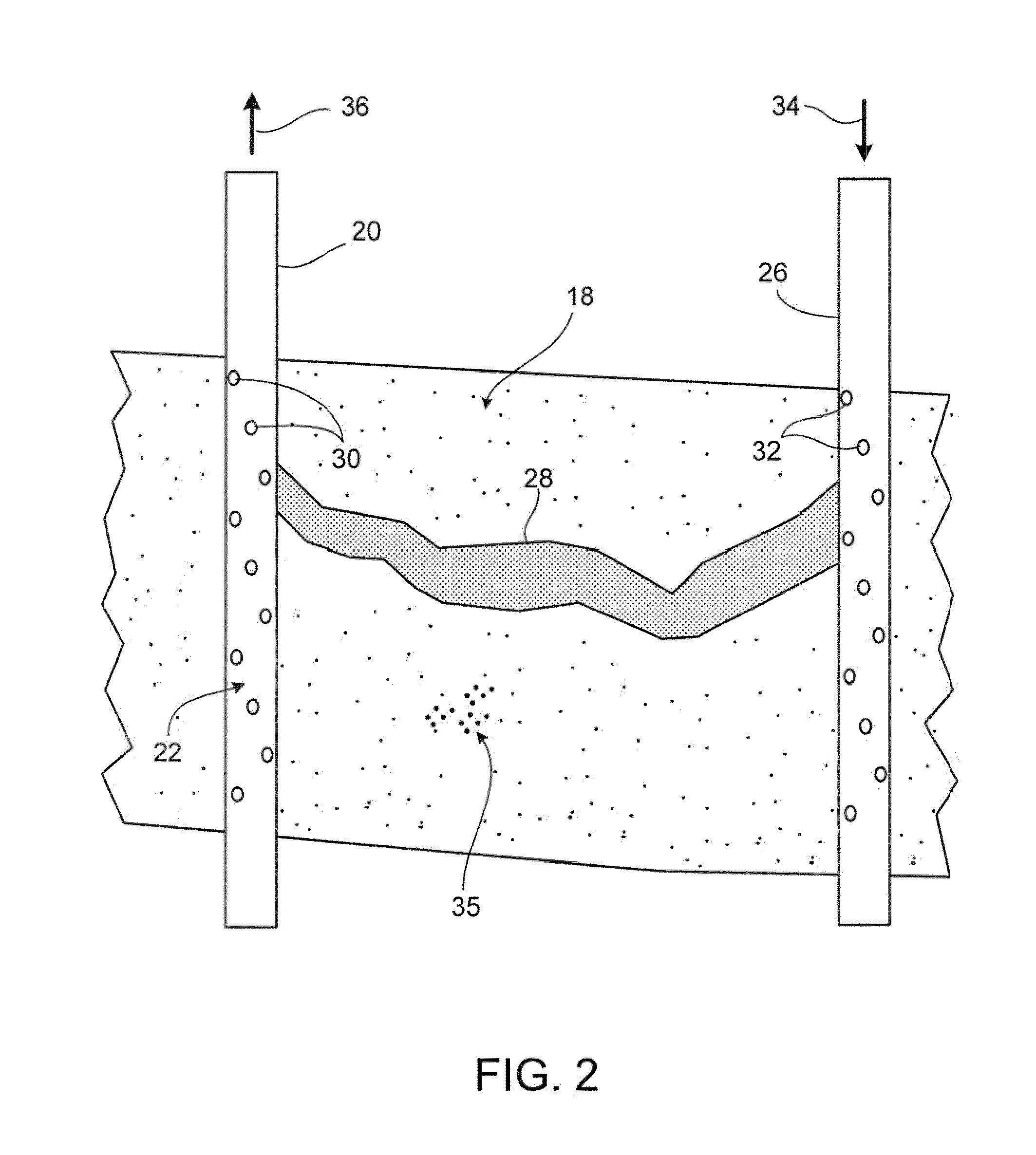Detecting fluids in a wellbore
a technology of fluid detection and wellbore, which is applied in the direction of wellbore/well accessories, optical prospecting, instruments, etc., can solve the problems of reducing the hydrocarbon displacement efficiency of injected fluid, less than ideal sweep and production performance, and difficulty in short circuit analysis
- Summary
- Abstract
- Description
- Claims
- Application Information
AI Technical Summary
Benefits of technology
Problems solved by technology
Method used
Image
Examples
Embodiment Construction
[0024]One implementation of a downhole fluid detector includes a visible spectrum light source and an ultraviolet light source along with an optical receiver that, when lowered into a production wellbore, can produce video and still images of a fluid entering a wellbore under both light spectrums. The downhole fluid detector may distinguish between the produced fluids by observed differences in the fluorescence of hydrocarbons entering the production wellbore and the fluorescence of a tracer injected with the injected fluid into an offset injection well. A quantification of the amount of hydrocarbons relative to the injected fluid being received at any particular communication interval, or production zone, of the wellbore may be performed. This quantification may help indicate when remedial action should be taken to correct “short circuits” between the injection well and the production well, as well as where within the producing well to minimize damage to other hydrocarbon-producing...
PUM
 Login to View More
Login to View More Abstract
Description
Claims
Application Information
 Login to View More
Login to View More - R&D
- Intellectual Property
- Life Sciences
- Materials
- Tech Scout
- Unparalleled Data Quality
- Higher Quality Content
- 60% Fewer Hallucinations
Browse by: Latest US Patents, China's latest patents, Technical Efficacy Thesaurus, Application Domain, Technology Topic, Popular Technical Reports.
© 2025 PatSnap. All rights reserved.Legal|Privacy policy|Modern Slavery Act Transparency Statement|Sitemap|About US| Contact US: help@patsnap.com



